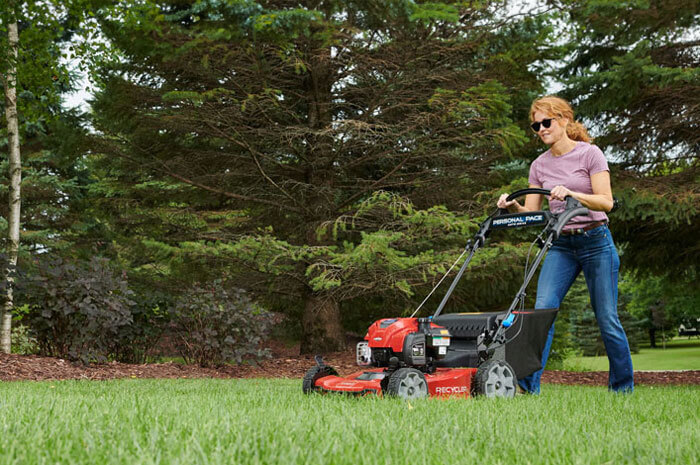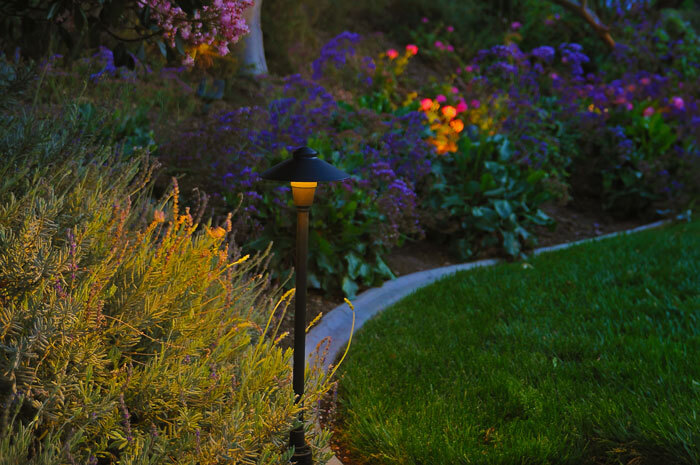
The peak of summer heat is here – can your lawn handle it?
We suggest the following tips and tricks in order to maintain a healthy, intact lawn during the extreme heat of the summer.
Tip #1: Don’t Cut Grass Too Short
One common mistake made by both homeowners and commercial landscape maintenance companies is cutting a lawn too short. If grass is cut too short, especially in hot weather, it reduces the plants’ ability to produce energy for growth. When cut at the proper height, however, grass develops stronger roots that support more vigorous plants that are more tolerant of stress.
Keep in mind that different varieties of grass have different growth habits that directly relate to mowing heights. For example, cool-season grass and warm-season grass types require somewhat different maintenance techniques and recommended cutting heights.
Tip #2: Remember the One-Third Rule
When deciding on the correct height to cut your grass, it is important to also remember the “one-third” rule: never remove more than one-third of the grass height at one time. This keeps the lawn cooler because less plant tissue has been removed.
In fact, cool-season grass types actually benefit from more height in hot weather. If your lawn is normally cut at 2.5 inches, for example, increasing it to 3 inches in the heat of summer will help reduce heat stress and could keep your grass from going dormant.
Tip #3: Limit Water Intake
One collective misconception about watering lawns in extreme heat is that overwatering is a necessity. In fact, turf grasses are better managed on the dry side rather than wet. When soil is constantly wet, it creates physiological problems for plants and soil organisms alike. The grass roots will be deprived of oxygen and may become more susceptible to diseases that thrive in wet conditions. In general, the drier the grass and soil, the less disease there will be.
Another rule of thumb is to water “deeply and infrequently.” Water deeply to wet the entire root zone, and then do not water again until the grass is dry. To determine the next watering time, simply “eye it.” If it starts to look dry, then water. If you would like to be specific, water the hot spots (spots that get dry faster than the rest of the lawn) and then wait for the rest of the lawn to dry out.
While it is important to be mindful of hydration, do not water the grass daily. Lawns need only one inch of water per week, including rainfall.
Tip #4: When in Drought, Leave It
Avoid mowing during droughts. Lawns under drought stress are limited in their ability to recover from mowing and can be damaged even more. Instead, cut the grass once it dries after rainfall or an irrigation day. Resist mowing wet grass to avoid clumping.
What Temperature is Too Hot To Mow Grass?
Different types of grass have different thresholds of heat they can withstand, but even warm season grasses can be damaged if they are mowed when the temperature is too hot. If the day gets up to 90 degrees or warmer, leave the cutting for another day.
What is the Best Time of Day to Mow Your Lawn in Hot Weather?
Sometimes you have to mow in the height of summer. If that’s the case for you, picking the best time of day will keep the hot weather manageable for you and your lawn. Obviously, cutting grass at noon in 100 degree weather is a bad idea, but mowing too early in the morning or too close to nighttime is also unhealthy for your lawn. The best time to mow during hot weather is mid-morning or late afternoon after the temperature starts to go down again.
Tip #5: Keep Blades Sharp
When grass is cut with a sharp mower blade, the plant will heal faster than if cut with a dull blade. Dull blades actually tear the plant tissue, not cut it; this torn grass tissue will develop a brown appearance and may become more susceptible to stress and disease, especially in hot weather.
Tip #6: Do Not Bag Grass Clippings
Return clippings to the lawn by using a mulching mower. Clippings are actually beneficial to the lawn, as they act as a slow-release fertilizer for the plant as they decompose. This will help ensure your lawn has plenty of nutrients to recover from the heat without needing to add extra fertilizer. Just make sure to keep the clippings out of streets, storm drains, and bodies of water.
If you are mowing near bodies of water, do bag the clippings within one or two mower widths of the water’s edge to reduce pollution of streams and lakes by the nutrients released from decomposing leaf tissue.
Tip #7: Fertilizing and Cultivation? Don’t Even Think About It
Although the idea of adding fertilizer might sound like a good idea to maintain a vigorous lawn, do not do it during the heat of mid-summer. During the hot summer months, the cool season grasses are consuming more than they can produce. Fertilizing stimulates more growth, which consumes even more energy and further stresses lawns during periods of high temperatures.
The same rules apply to cultivation practices such as aerification and dethatching. Resist doing anything that imposes temporary damage during periods of summer heat. Instead, cultivate in fall or spring when the turf is vigorous and can recover quickly from the temporary injury.
Tip #8: Importance of Promote Year-Round Health
A year-round, two-pronged approach will make maintaining a healthy lawn an easier process. Step one is to maintain health in all seasons, since grass will tolerate the heat more easily in a healthy state. Year-long care includes proper fertilization, watering, mowing, and pest control that all help to produce a consistently healthy lawn that is best able to tolerate summer heat and other stresses.
The second step is to use best management practices during the actual summer stress period – all the things discussed in this article above. Keeping your yard healthy in extreme heat is achievable, and the reward of a happy lawn all year long is well worth the effort.



